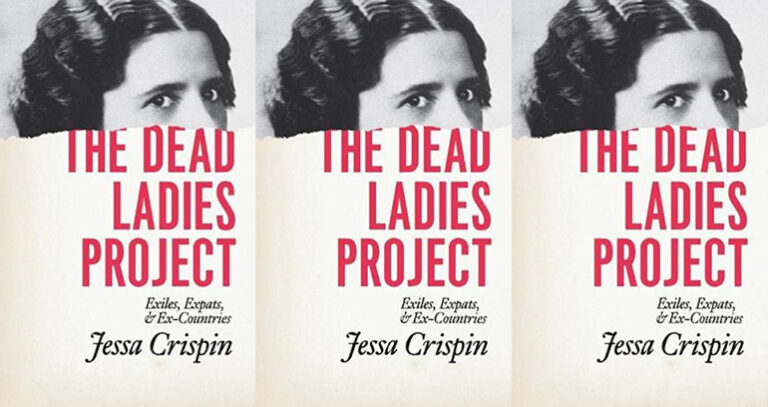Charles W. Chesnutt’s The House Behind the Cedars’ Black Medievalism
If, like me, you’re the sort of nerd who will always click a link about elves, you’ve probably seen the recent online battle over the existence of elves (and hobbits) of color, spurred by the Amazon Studios-backed adaptation of J.R.R. Tolkien’s high fantasy epics, which features actors of color in those roles. Racist backlash is a common response to fantasy stories that have any sort of racial diversity—just look at the recent fan response to the sci-fi, fantasy series Kenobi. This elvish controversy, however, is rooted in racism of a particular sort: it assumes that medievalism is the exclusive the domain of white people.
Medievalism, the genre to which Tolkien’s works belong, uses medieval aesthetics, history, and stories to craft its narrative—think castles, elves, dragons, and knights. Historically, and partly because of people like Tolkien, works of medievalism have been associated with whiteness: white authors, white characters, white worlds. As critics like Matthew Vernon, Jonathan Hsy, Cord Whitaker and others have argued, however, medievalism has long been used and shaped by authors of color.
Charles W. Chesnutt’s 1900 novel, The House Behind the Cedars, is one such—appallingly under-read—work of Black medievalism. (I myself only learned of it a couple of years ago via the work of Vernon, whose writing and podcasting about Chesnutt and Black medievalism I cannot recommend highly enough.) Chesnutt’s novel is an innovative grafting of one of the originary popular works of medievalism—Sir Walter Scott’s 1819 novel, Ivanhoe—onto a Reconstruction era American South. Chesnutt, the acclaimed writer of works like The Conjure Woman (1899) and an early activist with the NAACP, used this grafting to consider the historical and racial consequences of medievalism and as a critical lens through which to investigate Black life and identity.
We can see as much in the points of connection and disjuncture Chesnutt creates between The House Behind the Cedars and Scott’s Ivanhoe. Ivanhoe was an enormously popular work throughout the nineteenth and twentieth centuries. It tells the story of the titular character, Sir Wilfred of Ivanhoe, a knight from one of the old Saxon families, who braves crusades, jousts, and court intrigue all while trying to court and marry his childhood love and fellow Saxon, the lady Rowena. There is also the beautiful Jewish healer, Rebecca, who saves Ivanhoe and, in the process, falls for him; she eventually chooses to live in exile after she is almost burned at the stake as a witch. If this sounds complicated, know that I’m skating over many details including a dastardly plot by the Knights Templar, a series of hidden identities, and cameos from Robin Hood. The important thing to know is that Ivanhoe glorified and modeled a form of chivalric valor and love that its readers emulated, often literally. In the American South in the nineteenth and twentieth centuries, for example, where the plantation class fostered a culture of Southern chivalry, communities hosted medieval-inspired jousts in which “knights” competed against each other in ring tournaments. These knights proved their horsemanship and athleticism by collecting as many rings as possible on the tips of their lances. The winner of the tournament would then crown a young, beautiful woman as the Queen of Love and Beauty. Historians have noted the link between this form of plantation-based medievalism and cultures of white supremacy, with the tournaments serving to celebrate a fetishized ideal of white masculinity and historical purity.
It is with these tournaments and their resonances with Ivanhoe that Chesnutt begins to unravel the historic and racial weight of Southern medievalism. Chesnutt’s novel centers on a pair of siblings of mixed racial heritage, John and Rena Walden. Their mother, Molly, is a light-skinned woman from a long line of freemen; their now dead father was a wealthy white man of the plantation, enslaving class who took Molly as his mistress. John and Rena are able to “pass” for white, which John uses to move into Southern, white, elite society, all while concealing his history and racial identity. He eventually brings Rena, who takes the name Rowena, to live with him. So beautiful and charming is Rena that she immediately draws the attention of everyone in John’s social circle. At a local ring tournament that directly mirrors an encounter between Ivanhoe and Rowena, she is crowned the Queen of Love and Beauty. The tournament’s winning knight, George Tyron, becomes deeply enamored of her and proposes within a few short weeks.
Anyone familiar with nineteenth and twentieth century American literature, however, should be immediately concerned about John and Rena’s fates. They fit the characteristics of a popular character type of the time: the tragic mulatta/o. This type varies both in characteristics and in nuance depending on the author, but in its basic form describes a mixed-race person who struggles psychologically and socially with their inability to fit into a single racial identity. John, who lives for more than a decade concealing his racial history, struggles with this less than Rena, who, once she accepts George’s proposal, is filled with doubts. Can she conceal her past forever? How would George respond if he knew? Can she live apart from her mother, never seeing her again in order to keep her secret? Without spoiling the entire plot, it is these doubts that lead to the unraveling of the life she built with her brother. George discovers the truth, the proposal is broken off, and Rena is left to try and forge a new identity for herself once again.
This context is important for understanding how Chesnutt critiques Southern medievalism and the ways he critically explores Black identity. The ring tournament staged in the novel is meant to reveal and showcase the pinnacle of white, Southern, chivalric masculinity and femininity. The winner of the ring tournament proves his prowess on a horse, his skillful athleticism in collecting rings, and his courtly abilities in judging the pinnacle of Southern (white, elite) beauty and womanhood by crowning the Queen of Love and Beauty. The Queen of Love and Beauty through her beauty, refinement, and visible class status, proves her own ability to meet these feminine ideals by receiving the Crown. The medievalism of the ring tournament identifies these proofs as the product of long-established histories. What the knight and Queen “prove” is both their ability to meet those ideals and that those ideals are the product of a particular racial and social history: one that is white and European.
Being an astute reader of the politics of these ring tournaments, Chesnutt disrupts this narrative. Rena, like her namesake in Ivanhoe, wins the Crown. Rena, unlike Rowena, is not a Saxon lady descended from a longline of Saxon ladies. Her crowning suggests both that a non-white woman can meet the ideals of the tournament and that the “ideal” Southern knight might not come to see and recognize that anything is amiss in her winning. In other words, ring tournaments do not prove what they claim to prove.
Such a revelation has a revolutionary capacity, an ability to challenge white supremacist ideals of history, race, and society. But the problem of the novel is history: the histories and traditions that the novel’s characters cling to and the weight of personal histories that bear down on those who would escape them. When George Tyron realizes Rena’s mixed-racial identity, he struggles with a conflict. Should he embrace his love for Rena or the history of racial purity he as a good Southern “knight” was raised to protect? George spends most of the novel vacillating between these options. He is unable to set aside his sense of history, even as he recognizes that this history is itself built on narratives of false racial purity: “Surely in the past centuries of free manners and easy morals that had prevailed in remote parts of the South, there must have been many white persons whose origin would not have borne too microscopic an investigation. Family trees not seldom have a crooked branch; or, to use a more apposite figure, many a flock has its black sheep.”
Rena’s response to her broken engagement is more interesting than George’s. Like the path Ivanhoe’s other heroine, Rebecca, eventually chooses, Rena leaves behind her chivalric world. She seeks new places and communities. Once her engagement is broken, Rena refuses to return to the white, plantation-owning world her brother inhabits. Instead, she seizes the opportunity to re-examine her own Black identity, and she turns to the Black community that she grew up alongside but, as a mixed-race woman descended from freemen, had been distant from:
Her early training had not directed her thoughts to the darker people with whose fate her own was bound up so closely, but rather away from them. She had been taught to despise them because they were not so white as she was, and had been slaves while she was free. Her life in her brother’s home, by removing her from immediate contact with them, had given her a different point of view,—one which emphasized their shortcomings, and thereby made vastly clearer to her the gulf that separated them from the new world in which she lived; so that when misfortune threw her back upon them, the reaction brought her nearer than before. Where once she had seemed able to escape from them, they were now, it appeared, her inalienable race.
Rena rethinks her identity and her community as a response to her loss. She further uses a brief career as a teacher at a Black school to become more socially and politically engaged.
The true tragedy of the novel is that Rena’s reflections on her racial identity, which Chesnutt portrays as nascent and naïve but growing, are cut short. Rena’s personal history, her time with George, and her encounters with another would-be suitor, end her nascent explorations.
What is fascinating, however, from the perspective of race and medievalism, is that the epicenter for Rena’s reflections on her identity and Black community is the pseudo-medieval tournament that was meant to reify white identity and femininity. Chesnutt uses medievalism as the starting point from which Rena begins thinking more critically about Black identities, histories, and communities. Chesnutt’s story is thus an ironic flipping of Southern medievalism’s generic and racial script.
The recent fights over elves of color and the like are ridiculous for a number of reasons (elves aren’t real, after all). But they’re dangerous and ridiculous for two other critical reasons. The first is obvious: insistence on white medievalism feeds white supremacist narratives of racial and historical purity. The second is less obvious, but Charles Chesnutt helps us to see it. Limiting the scope of medievalism to white narratives, characters, and authorship keeps us from seeing the far more creative and capacious sets of stories that medievalism might tell. That it has, in fact, already told. It keeps us from seeing how medievalism has, and might continue having, the capacity to ask us to reflect on histories and identities beyond the limited scope of white identity. Medievalism, in the hands of talented authors like Chesnutt, has the capacity to spur radical reflection and to redefine genres and histories. So read Black medievalism, or read Sui Sin Far and Chinese American medievalism, and read Osamu Tezuka’s Princess Knight (Ribon no Kishi). If you’re looking for a place to start, try The House Behind the Cedars.



 Spring 2023 - Digital
Spring 2023 - Digital